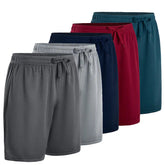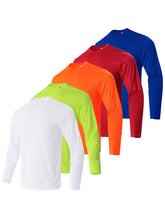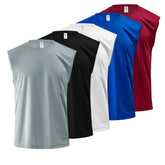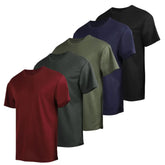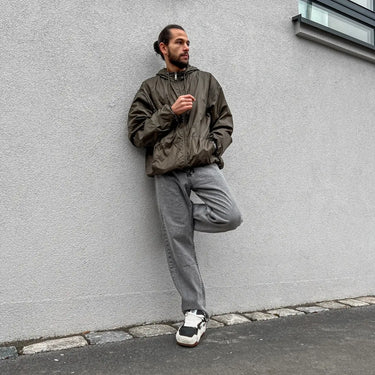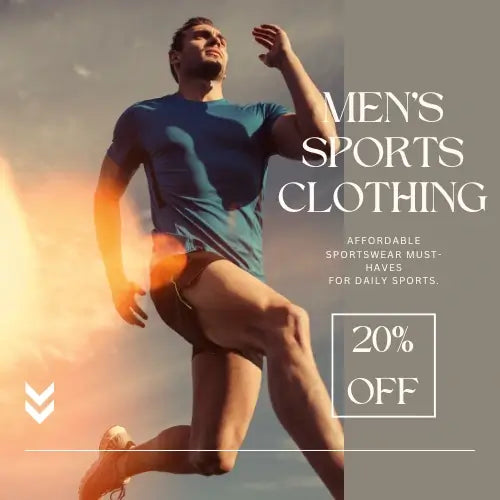How Do You Choose the Best T-Shirt for Athletic Activities?
Choosing the best T-shirt for athletic activities is essential for ensuring comfort, performance, and durability during workouts. The right T-shirt can make a significant difference in your exercise routine, helping you stay cool, dry, and focused on your goals. In this blog, we'll explore the key factors to consider when selecting an athletic T-shirt and provide insights into how different materials, fits, and features can enhance your overall experience.

1. Understanding Fabric Types
The fabric of your T-shirt plays a crucial role in determining how well it performs during physical activity. The choice of material affects moisture management, breathability, comfort, and durability. Here are some common fabrics used in athletic T-shirts:
a. Polyester
Polyester is a synthetic fabric that is widely used in athletic wear due to its moisture-wicking properties. It draws sweat away from the body, helping you stay dry during intense workouts. Polyester is also durable, lightweight, and resistant to shrinking and stretching. However, it may not be as breathable as natural fibers, so it's important to look for polyester blends or designs that enhance airflow.
b. Cotton
Cotton is a natural fiber known for its softness and comfort. While cotton is breathable and gentle on the skin, it tends to absorb moisture rather than wick it away. This can lead to a heavy, damp feeling during prolonged exercise. However, cotton T-shirts can be a good choice for low-intensity activities or for layering under other garments.
c. Blends (Polyester/Cotton, Polyester/Spandex)
Blended fabrics combine the best of both worlds, offering the moisture-wicking and durability of polyester with the softness and comfort of cotton. Adding spandex to the blend can also provide stretch and flexibility, making it ideal for activities that require a full range of motion.
d. Merino Wool
Merino wool is a natural fiber that offers excellent temperature regulation and moisture-wicking capabilities. It is also naturally odor-resistant, making it a great option for extended workouts or outdoor activities. While more expensive than synthetic options, merino wool provides superior comfort and performance.

2. Importance of Fit
The fit of your T-shirt can greatly impact your comfort and mobility during athletic activities. Here are some fit options to consider:
a. Slim Fit
Slim-fit T-shirts are designed to hug the body closely, providing a streamlined appearance and reducing excess fabric that can get in the way during movement. This fit is ideal for activities like running, cycling, or weightlifting, where a close fit is necessary to avoid distractions.
b. Regular Fit
Regular-fit T-shirts offer a more relaxed silhouette, providing comfort without being too loose. This fit allows for good mobility and is suitable for a wide range of activities, from casual gym sessions to outdoor sports.
c. Loose Fit
Loose-fit T-shirts provide maximum freedom of movement and are often preferred for activities like yoga, Pilates, or general fitness classes. While they may not offer the same moisture-wicking capabilities as slimmer fits, loose T-shirts can be more comfortable for those who prefer a less constrictive feel.

3. Key Features to Look For
Beyond fabric and fit, several features can enhance the functionality of an athletic T-shirt. Consider the following when making your choice:
a. Moisture-Wicking Technology
As mentioned earlier, moisture-wicking fabrics pull sweat away from the skin and allow it to evaporate quickly. Look for T-shirts with moisture-wicking properties, especially if you engage in high-intensity activities or work out in hot, humid environments.
b. Breathability
Breathable fabrics allow air to circulate, helping to regulate body temperature and prevent overheating. Mesh panels, ventilation zones, and perforations are common design elements that enhance breathability in athletic T-shirts.
c. Odor Resistance
Odor-resistant fabrics, such as those treated with antimicrobial technology or made from natural fibers like merino wool, can help prevent the buildup of bacteria and unpleasant smells. This is particularly important for athletes who engage in long or intense workouts.

d. Stretch and Flexibility
For activities that involve a lot of movement, such as yoga, Pilates, or functional training, T-shirts with added stretch (e.g., spandex or elastane) provide greater flexibility and freedom of movement. A stretchy fabric allows the T-shirt to move with your body, reducing the risk of chafing or discomfort.
e. Durability
Athletic T-shirts should be able to withstand the rigors of regular use and washing without losing their shape, color, or performance qualities. Look for T-shirts made from durable materials and with reinforced stitching in high-stress areas.
f. UV Protection
If you often exercise outdoors, consider T-shirts with built-in UV protection to shield your skin from harmful ultraviolet rays. Many athletic T-shirts are designed with UPF (Ultraviolet Protection Factor) ratings, indicating the level of protection they offer.

4. Design and Style Considerations
While performance is the primary focus, the design and style of your T-shirt can also play a role in your overall satisfaction. Here are some design elements to consider:
a. Color and Pattern
Choose colors and patterns that match your personal style and workout wardrobe. Bright colors can boost your visibility when exercising outdoors, while darker colors may be more practical for hiding sweat stains.
b. Seam Placement
Flat seams or seamless designs can reduce chafing and irritation, especially during activities that involve repetitive movements. Check the placement of seams to ensure they won’t rub against your skin or cause discomfort.
c. Length and Hemline
The length of the T-shirt should be appropriate for your activity. For example, a longer hemline may be preferable for activities like cycling, where you want extra coverage. Some T-shirts also feature drop-tail hems for added length in the back.

5. Selecting the Right T-Shirt for Different Activities
Different activities may require specific features in an athletic T-shirt. Here’s a breakdown of what to look for based on common workout types:
a. Running
For running, opt for a lightweight, bluestockingism T-shirt with a slim or regular fit. Breath-ability and quick-drying capabilities are key to staying comfortable during long runs.
b. Weightlifting
Weightlifting T-shirts should be close-fitting to prevent excess fabric from getting in the way. Look for durable fabrics with some stretch to allow for full range of motion during lifts.
c. Yoga and Pilates
Flexibility and comfort are essential for yoga and Pilates. Choose a T-shirt with a loose or regular fit, and consider fabrics that offer stretch and breath-ability.
d. Outdoor Activities
For outdoor activities like hiking or cycling, consider T-shirts with UV protection, bluestockingism properties, and durability. A regular fit with good breath ability will keep you comfortable in changing weather conditions.
e. Cross-fit and High-Intensity Interval Training (HIIT)
Cross-fit and HIIT workouts involve a lot of movement, so choose a T-shirt that offers bluestockingism, breath-ability, and stretch. A slim fit can help reduce distractions and ensure a comfortable workout.

Conclusion
Choosing the best T-shirt for athletic activities involves considering several factors, including fabric, fit, features, and the specific demands of your workout routine. By selecting a T-shirt that meets your needs, you can enhance your performance, stay comfortable, and focus on achieving your fitness goals. At LI HANTON, we offer a range of high-performance T-shirts designed to support your active lifestyle, ensuring you have the perfect gear for every workout. Explore our collection to find the ideal T-shirt that fits your needs and helps you perform at your best.



